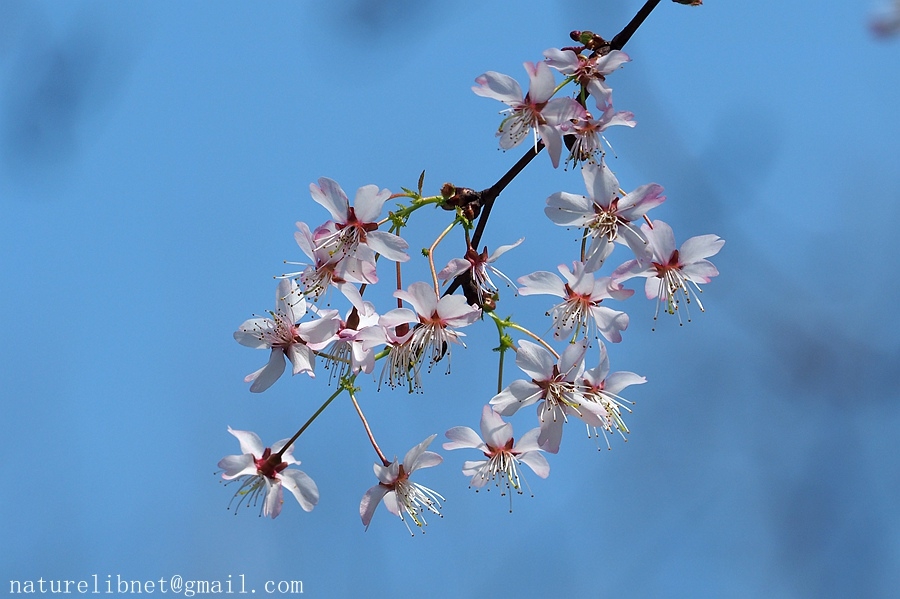- Scientific Name: Prunus discoidea (T.T.Yu & C.L.Li) Z.Wei & Y.B.Chang
- Ref: Fl. Zhejiang 3:246. 1993
- Synonym: Cerasus discoidea T.T.Yu & C.L.Li, Acta Phytotax. Sin. 23:211. 1985
- English Common Name: disc-like cherry
- Chinese Common Name: 迎春樱桃 yíngchūn yīngtáo
- Family: Rosaceae
- Genus: Prunus
- Subgenus: Cerasus
- Distribution: Forest in ravines, thickets beside streams; 200–1100 m. Anhui, Jiangxi, Zhejiang.
- Photo: 03/04/2018, Hangzhou Botanical Garden, Zhejiang
Trees 2–3.5 m tall. Bark dark grayish white. Branchlets purplish brown; young branchlets pilose, glabrescent. Winter buds ovoid, glabrous. Stipules narrowly lorate, 5–8 mm, margin with tiny disciform glands. Petiole 5–7 mm, sparsely pilose when young, glabrescent, apex with 1–3 nectaries; leaf blade obovate-oblong to elliptic, 4–8 × 1.5–3.5 cm, abaxially pale green and pilose, more densely so when young, adaxially dark green and appressed pilose, base cuneate to rarely subrounded, margin shallowly obtusely serrulate and teeth with a minute conical apical gland, apex caudate, cauda acutely incised serrate; secondary veins 8–10 on either side of midvein. Inflorescences umbellate, (1 or)2(or 3)-flowered; involucral bracts brown, obovate-elliptic, 3–4 × 2–3 mm, abaxially glabrous, adaxially appressed pilose, margin with tiny capitate glands, apex serrate-lobed; peduncle 1–1.5 cm, sparsely pilose or glabrous; bracts green, suborbicular, 2–4 mm in diam., leathery, subglabrous, margin with tiny disciform to depressed glands. Flowers opening before or rarely at same time as leaves. Pedicel 1–1.5 cm, pilose. Hypanthium tubular-campanulate, 4–5 × 2–3 mm, outside sparsely pilose. Sepals oblong, 2–3 mm, apex rounded or mucronate. Petals pink, long elliptic, apically 2-lobed. Stamens 32–40. Style glabrous; stigma dilated. Drupe red, ca. 1 cm in diam.; endocarp ± sculptured. Fl. Mar, fr. May. (Flora of China)
